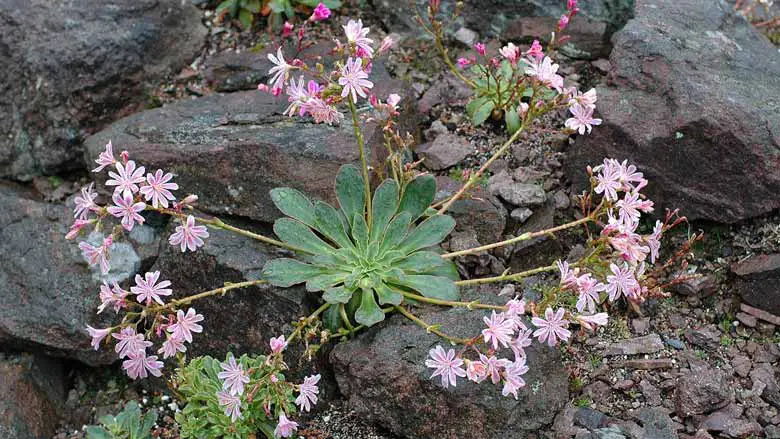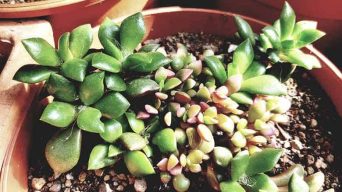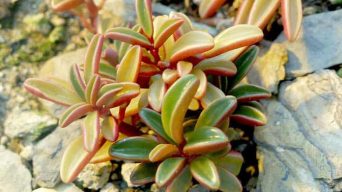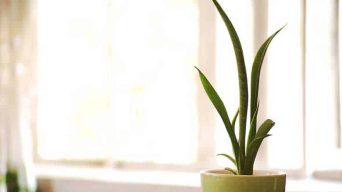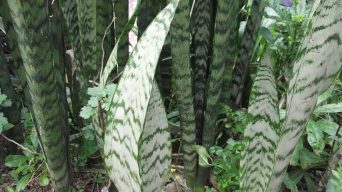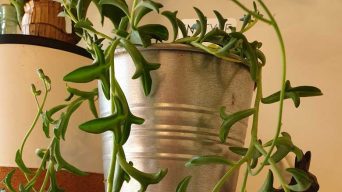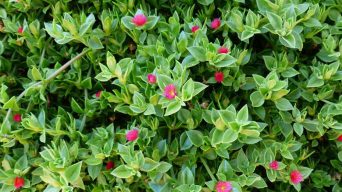Succulents are popular for many good reasons.
Their interesting characteristics, beautiful flowers, thriving contorted shapes, and hardiness are just a few reasons why these evergreen perennial plants are loved by so many.
The Lewisia cotyledon is one succulent that is often overlooked in the gardening world, though it should be included in every plant collection due to its unique qualities.
This article will teach you how to take care of and propagate the Lewisia cotyledon succulent plant.
Overview
Lewisia cotyledon, commonly known ass Siskiyou lewisia and Cliff Maids, is a flowering plant in the family Montiaceae and native to southern Oregon and northern California, North America.
The specific name cotyledon, meaning “small cup,” refers to the form of the leaves.
The fleshy spoon-shaped leaves of Lewisia cotyledon are dark green and grow up to 4 inches (10 cm) long, forming a flat rosette above a long, thick taproot.
From early spring to late summer, the inflorescence develops on stems up to 12 inches (30 cm) tall, with an array of up to 50 flowers on each stem.
The flowers can be pale pink with pinkish-orange stripes or a solid orange to yellow color.
How To Care for Lewisia Cotyledon (Siskiyou Lewisia)
Lewisia cotyledon care is straightforward, and this succulent plant is perfect for beginners and expert gardeners.
Here you’ll discover the essential information about caring for Lewisia cotyledon.
Sun Exposure & Light Requirements
Lewisia cotyledon is a succulent plant that thrives in full sun to partial shade.
It should be kept in a location where it receives full sun for at least part of the day but protect it from the direct midday sun, especially in hot climates.
It requires at least 4-5 hours of direct sunlight every day. Ensure that your plant is not exposed to full sun all day long, as it may cause the leaves to burn.
If you’re growing your plant indoors, place it near a window that gets plenty of indirect bright light.
Placing your Lewisia plants near a west or east-facing window will provide the best light exposure.
Watering Requirements
The Lewisia cotyledon succulent plant should be watered sparingly, as it does not like wet feet. Water only when the soil feels dry to the touch, and then water thoroughly until the water drains out of the pot’s bottom.
In general, the succulent should be watered every 7 to 10 days. However, when the plant is dormant during winter, it should only be watered every 3 to 4 weeks.
Do not let the plant sit in soggy soil for too long, as this will rot, damage the roots, and eventually kill it.
Also, be sure to avoid getting water on the succulent leaves, as this can cause them to rot and fall off. Only water the soil and avoid getting the plant wet.
Water only in the morning so that the plant has time to dry off before nightfall.
Soil Requirements
Like most succulents, the Lewisia plant can adapt to many soil conditions. It can be planted in well-draining soil like gravel or sand for faster growth.
However, if you want to take care of this type of plant at home, you should consider buying a cactus and succulent soil mix.
If you cannot find this type of soil, you can also make your own by mixing one part potting soil with one part perlite and one part coarse sand or gravel.
Perlite is used as an additive to potting soil because it improves the drainage of the mix. Without perlite, your succulents will not absorb water and nutrients quickly and adequately, and they may rot or die.
Sand and gravel are also common additives, as they help improve drainage and aeration.
Temperature and Humidity
Lewisia cotyledon plants do well in average to cool room temperatures of 65-75 degrees Fahrenheit.
Do not expose them to temperatures below 50 degrees Fahrenheit or above 90 degrees Fahrenheit for more than a few hours at a time.
Temperatures below 40 degrees Fahrenheit are detrimental to their health and may kill them even if they are exposed to these temperatures for only short periods.
You do not need to keep your Lewisia cotyledon inside, but you must be very careful with the temperature.
Humidity should also be low to average for this plant species.
Not only are they used to growing in an area with little humidity, but high humidity can cause them to rot easily, so their environment must have normal room humidity of around 40-50%.
Fertilizing
Lewisia cotyledon does not require much fertilizing. Over-fertilizing can be harmful to the plant.
A light application of a balanced liquid fertilizer diluted to half-strength during the growing season is more than enough. The plant should be fertilized every two to four weeks.
A balanced liquid fertilizer is best because most balanced liquid fertilizers have a ratio of 1:1:1 or lower amounts of nitrogen with higher amounts of phosphorus and potassium.
It is worth noting that Lewisia cotyledon does not require much fertilizer because the plant has adapted to growing in nutrient-poor soils.
Potting and Repotting
When planting your Lewisia cotyledon, ensure that the container has drainage holes in the base. If it is not pre-drilled, you can easily cut some holes yourself with a knife or drill bit.
Use a terracotta pot or any other non-toxic, porous material. Avoid using plastic or metal pots as they can trap moisture and create the perfect conditions for rot to set in.
Before repotting your plant, ensure it has outgrown its pot. You can tell this because the roots will be forced to wrap around the inside of the pot, and its growth is visibly restricted.
Once you are ready to repot, take a sharp knife or spade and gently dig around the edges of the plant’s root ball.
Pry the plant free from the pot and loosen any compacted soil. You can cut the roots apart with a sharp knife if the roots are very tangled.
Once the plant is free from the old pot, place it in its new pot and fill in around the roots with fresh soil.
Don’t water the plant for a few days after repotting to allow the roots to settle in.
Pruning
Lewisia cotyledon plants don’t require much pruning. Only remove dead or dying parts of the plant, and in general, prune after the plant finishes blooming.
Removing damaged and dead parts allows the plant to become more aesthetically pleasing and encourages new growth.
You can also prune the plant back to encourage a bushier shape if it becomes leggy.
When pruning, use sharp, clean scissors or a knife, and sterilize the blades between cuts with rubbing alcohol or hydrogen peroxide.
Be very careful not to damage healthy tissue when pruning, as this can lead to infection and death of the plant.
Pests and Diseases
Lewisia cotyledon plants are not known to have any serious pest or disease problems.
However, they may be susceptible to mealybugs, aphids, spider mites, and diseases such as root rot and powdery mildew.
Mealybugs
Mealybugs are small, soft-bodied, white insects that can be found sucking sap from the leaves and stems of plants.
They are most often found in hidden areas, such as the undersides of leaves and along the stems.
You can remove any mealybugs that you see with a cotton swab dipped in rubbing alcohol.
You can also use horticultural oil or insecticidal soap to control mealybugs.
Aphids
Aphids are small, soft-bodied insects that can be green, yellow, brown, or black.
They suck sap from plants and reproduce rapidly, making them difficult to control.
Use a strong spray of water to knock aphids from the succulent plant. They can also be controlled with insecticidal soap or neem oil.
Spider Mites
Spider mites are tiny and difficult to see with the naked eye. They spin webs on the leaves of plants and suck sap from them.
Remove any webs you see on your plants and take measures to prevent spider mites from attacking the plant again.
You can do this by wiping down the plant’s leaves with a damp cloth every few days.
Root Rot
Root rot is a disease that affects the roots of plants, causing them to decay and die.
The root rot symptoms include wilting plants, yellowing leaves, and stunted growth.
If your plant is affected by root rot, you will need to remove the infected soil from around the plant’s roots and replace it with fresh soil.
You can also use a fungicide to treat root rot.
Powdery Mildew
Powdery mildew is a fungal disease that affects the leaves and stems of plants, causing them to become covered in white powder.
The symptoms of powdery mildew include stunted growth, yellowing leaves, and deformed leaves.
If you think that your plant is affected by powdery mildew, remove any parts of the infected plant and dispose of them.
You can also use a fungicide to treat powdery mildew.
How to Care for Lewisia Cotyledon (Siskiyou Lewisia) in Winter
The Lewisia cotyledon is a beautiful plant in its own right, but it does not tolerate frost.
When night temperatures drop below freezing during the wintertime (November to March), take proper precautions to protect your plants.
Siskiyou Lewisias should be brought indoors when it starts to get cold. You can place them in a bright, sunny window or under grow lights.
They need at least six hours of sunlight a day to stay healthy.
Reduce watering to once every two weeks during the winter. The plant’s root system is not very active during this time, so there is no need to keep it constantly saturated with water.
When the weather warms up in spring, you can resume regular watering (once a week) and feeding schedules.
If you live in an area where the temperature does not drop below freezing for more than a week or two, you can leave your plant outdoors. But make sure it gets enough sun.
How To Propagate Lewisia Cotyledon (Siskiyou Lewisia)
Lewisia cotyledon can be easily propagated by seeds or offsets.
Seeds
To propagate Lewisia cotyledon seeds, make sure they are fresh (check their viability) and sow them on the surface of an appropriate seed mix for cactus.
Keep the potting mix moistened but not soggy during germination; rot may set in otherwise.
When the first pair of true leaves forms, transplant them into individual pots.
Offsets
Offsets are small plants that grow at the base of the mother plant.
To propagate Lewisia cotyledon offsets:
- After the offset has grown for a few months and formed its root system, cut it off from the mother plant using sharp shears.
- Carefully remove the leaves from the lower half of the stem, leaving only two or three leaves on top.
- Replant in fresh succulent potting soil with a 1/4 inch of soil covering the bottom of the stem.
- Water sparingly until the offset has established itself.
- Place in a warm, sunny location and care for the plant like any other succulent.
After a few months, the offsets will root and grow into mother plants.
The best time to propagate Lewisia cotyledon offsets is in late spring or early summer when the plant is actively growing.
Final Thoughts
Growing succulents is a relatively easy task to accomplish.
Once you have the basics of how it’s done, you can grow as many as you want and experiment with different types of succulents!
Lewisia cotyledon is a great place to start if you’re new to succulents, as it is one of the easier plants to care for and propagate.
With a little bit of TLC, your Lewisia cotyledon will thrive and produce beautiful blooms for years to come.

